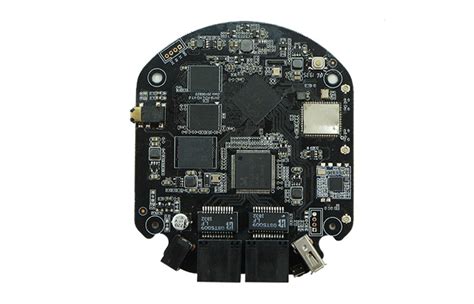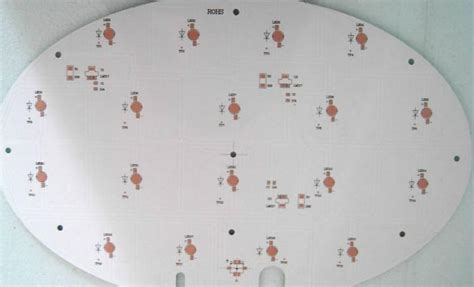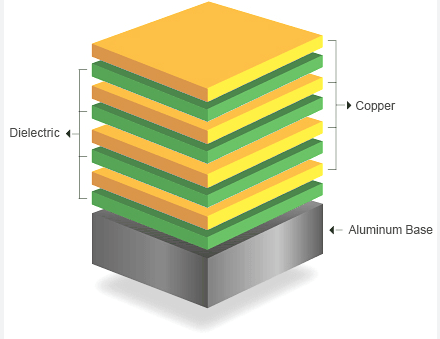Methods and Techniques in Circuit Board Repair
The three-coordinate measuring machine is a new type of high-efficiency precision measuring instrument that has been widely used in the fields of mechanical manufacturing, electronics, automobiles, and aerospace in the past three decades.
It can detect the size, shape, and relative position of the workpiece, and complete the measurement of the spatial profiles of the box, guide rail, turbine and blade, cylinder, cam, gear, and high-precision micro parts. As a precision measuring instrument, the measuring machine has the core part of the electronic control system.
If it fails, it will lead to abnormal operation of the entire machine tool. Since the control system is expensive, when it fails, in order to pay attention to economic benefits and save costs, it is generally repaired.
However, in the following situations, a new circuit board needs to be replaced:
the circuit board has reached the scrap age; the circuit board is severely damaged and cannot be repaired; after repeated repairs, problems continue to occur, indicating that the circuit board has unstable factors and is no longer suitable for continued use in the machine tool. I have been engaged in circuit board repair for many years. In my work, I have summarized some repair methods and techniques and introduced them to everyone. Let us encourage each other.
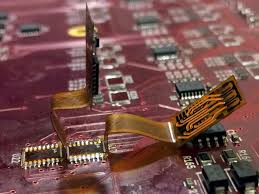
1 Observation method
When we get a circuit board to be repaired, we first observe its appearance carefully. If the circuit board has been burned, then before powering on the circuit board, we must carefully check whether the power circuit is normal, and power on after ensuring that no secondary damage will be caused. The observation method is a kind of static inspection method. When using the observation method, the following steps are generally followed.
The first step is to observe whether the circuit board has been damaged by humans. This is mainly from the following aspects:
① See if the circuit board has been dropped, causing the board corner to deform, or the chip on the board to be deformed or broken.
② Observe the chip socket to see if it is forcibly pried open due to the lack of special tools.
③ Observe the chip on the circuit board. If it has a socket, first observe whether the chip is inserted incorrectly.
This is mainly to prevent the operator from inserting the chip in the wrong position or direction when repairing the circuit board by himself. If the error is not corrected in time, when the circuit board is powered on, the chip may be burned, causing unnecessary losses.
④ If there is a short-circuit terminal on the circuit board, observe whether the short-circuit terminal is inserted incorrectly.
The maintenance of circuit boards requires a solid theoretical foundation and careful work. Through the careful observation of the repairer, sometimes the cause of the problem can be determined at this step.
The second step is to observe whether the components on the circuit board are burned.
For example, whether the resistors, capacitors, and diodes are blackened or fuzzy. Under normal circumstances, even if the resistor is burned, its resistance value will not change, its performance will not change, and it will not affect normal use. At this time, a multimeter is needed to assist in measurement. However, if the capacitors and diodes are burned, their performance will change, and they will not be able to play their due role in the circuit, which will affect the normal operation of the entire circuit. At this time, new components must be replaced.
The third step is to observe the integrated circuits on the circuit board
such as the 74 series, CPU, coprocessor, AD and other chips, for bulging, cracks, burning, and blackening. If such a situation occurs, it can be basically determined that the chip has been burned and must be replaced.
The fourth step is to observe whether the traces on the circuit board are peeling, burning and breaking. Whether the copper sinking hole is separated from the pad.
Step 5: Observe the fuses (including fuse tubes and thermistors) on the circuit board to see if the fuses are blown.
Sometimes, because the fuses are too thin and cannot be seen clearly, you can use an auxiliary tool – a multimeter to determine whether the fuses are damaged.
The above four situations are mostly caused by excessive current in the circuit. However, the specific reason for the excessive current requires specific analysis of the specific problem. However, the overall idea of finding the problem is to first carefully analyze the schematic diagram of the circuit board, and then find its parent circuit according to the circuit where the burned components are located, deduce it step by step, and then analyze the most likely places to have problems based on some experience accumulated in work, and find out the cause of the failure.
2 Static measurement method
For most circuit boards, the previous observation method cannot find the problem. As long as a small number of circuit boards will be physically deformed due to some special reasons, it is easy to find the cause of the failure. Most of the circuit boards that fail still need to use a multimeter to measure some major components and key points on the circuit board in an orderly manner to find and solve the problem.
Before measuring, we must first determine whether the circuit is mainly analog or digital. For circuit boards with schematics, we can determine this by looking at the schematics.
However, for circuit boards without schematics, we can generally determine this by the following two methods:
① Observe the components on the circuit board to see if there is a microprocessor on the circuit board. Whether it is the early 80, 51 series or the widely used DSP now, as long as such a chip appears on the circuit board, it means that there is a bus structure on the board, and digital signals will occupy a large part, so we can treat it as a digital board.
② For circuit boards without microprocessors, observe the components on the board to see if there are many chips using 5V power supply. If there are many 5V power supply chips, we can also treat it as a digital circuit for repair. The repair methods for digital circuits and analog circuits are different. Generally speaking, it is easier to repair analog circuits, and we can deduce step by step to find the problem. However, for digital circuits, since the circuits are all hung on the bus, there is no clear superior-subordinate relationship. Therefore, it is more difficult to repair. The following only focuses on the static measurement method of digital circuits, and the repair mainly follows the following steps.
Step 1: Use a multimeter to check if there is a short circuit between the power supply and the ground.
The method of inspection is: find a chip powered by a 5V power supply and measure two points on the diagonal (for example, for a 14-pin chip, measure pins 7 and 14.
For a 16-pin chip, measure pins 8 and 16). If there is no short circuit between the two points, it means that the power supply is working normally. If a short circuit occurs, you need to find the cause through troubleshooting.
These steps are just the basic ideas for power supply maintenance. Specific problems need to be analyzed specifically for particularly complex circuit boards.
The power supply is the basis of the circuit. Only when the power supply works properly can we talk about the application of subsequent circuits. Therefore, the measurement of the power supply is very important, and it is also a step that is particularly easy to be overlooked by the repairer.
Step 2: Use a multimeter to measure the diode and observe whether it works normally.
Under normal circumstances, use the resistance range to measure the positive and negative poles. The positive phase is measured to be tens to hundreds of ohms, and the reverse phase is measured to be one thousand to several thousand ohms. Generally speaking, the damage of the diode is caused by the excessive current in the circuit, which causes the diode to be broken down.
Step 3: Use the resistance range of the multimeter to measure the capacitance to see if there is a short circuit or an open circuit.
If there is, it means that there is a problem with this part of the circuit. The next step is to determine whether the problem is with the component itself or the circuit connected to it. The method is to solder off one leg of the suspected component to see if the component has an open circuit or an open circuit. In this way, the problem can be determined in one step.
Step 4: Also use a multimeter to measure the integrated circuits, transistors, resistors, etc.
on the circuit board to see if they meet their own logical performance. If the circuit board includes a bus structure, there will generally be a pull-up resistor row on the bus. The measurement of the resistor row is a very important step. Its quality can be used to preliminarily test the quality of the chip hanging on the bus.
After inspection by observation and static measurement methods, most of the problems in circuit board maintenance can be solved. It is worth noting that the power supply must be ensured to be normal to avoid secondary damage to the circuit board after the next step.
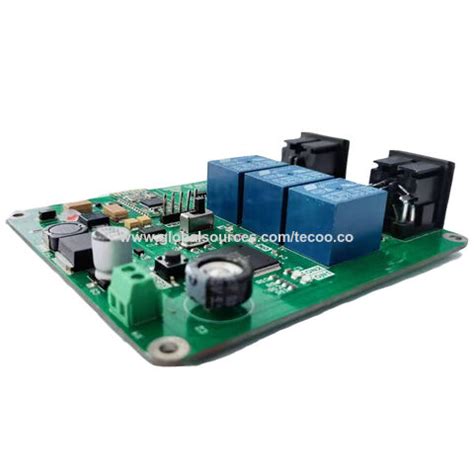
3 Online measurement method
The online measurement method is generally used in manufacturers that mass produce circuit boards. In order to facilitate maintenance, manufacturers generally build a more general debugging and maintenance platform, which can conveniently provide the power required by the circuit board and some necessary initial signals. The online measurement method mainly solves two problems. One is to subdivide the problems found in the above two steps, and finally lock the components with problems. The second is that if the problem is not solved through the above two steps, it is necessary to find out the cause of the fault through online measurement. The online measurement method is mainly carried out through the following steps.
The first step: Power on the circuit board. In this step, it should be noted that some circuit boards do not have a single power supply.
They may need 5V, positive and negative 12V, 24V, etc. Do not miss the power supply that should be added. After the circuit board is powered on, touch the components on the circuit board to see if there are any hot components. Focus on checking the 74 series chips. If the components are hot, it means that the components may be damaged. After replacing the components, check whether the circuit board fault has been resolved.
Step 2: Use an oscilloscope to measure the gate circuit on the circuit board to see if it conforms to the logical relationship.
If the output does not conform to the logic, it needs to be treated in two different ways. One is that the output should be low level, but the actual measurement is high level, which can directly determine that the chip is damaged; the other is that the output should be high level, but the actual measurement is low, which cannot determine that the chip is damaged. It is also necessary to disconnect the chip from the subsequent circuit and measure again to observe whether the logic is reasonable and determine whether the chip is good or bad.
Step 3: Use an oscilloscope to measure the crystal oscillator in the digital circuit to see if it has output.
If there is no output, it is necessary to remove as many chips connected to the crystal oscillator as possible before measuring. If there is still no output, it is preliminarily determined that the crystal oscillator is damaged; if there is output, it is necessary to install the removed chips one by one, install one and test one, and find out the fault.
Step 4: Digital circuits with bus structures generally include three buses: digital, address, and control.
Use an oscilloscope to measure the three buses, compare the schematic diagram, observe whether the signal is normal, and find out the problem.
Online measurement is mainly used to compare two good and bad circuit boards. Through comparison, problems can be found and solved. Thus, the circuit board repair is completed. This article gradually explains some methods and techniques in circuit board repair from three aspects: observation method, static measurement method and dynamic measurement. As modern technology becomes more and more mature, various new instruments and equipment continue to emerge, and detection methods are also emerging in an endless stream. The original detection equipment and methods are becoming less and less valued. However, for a person engaged in electronic engineering, relying on simple detection tools such as multimeters and oscilloscopes for measurement and maintenance is still an essential skill for an electronic engineer.

